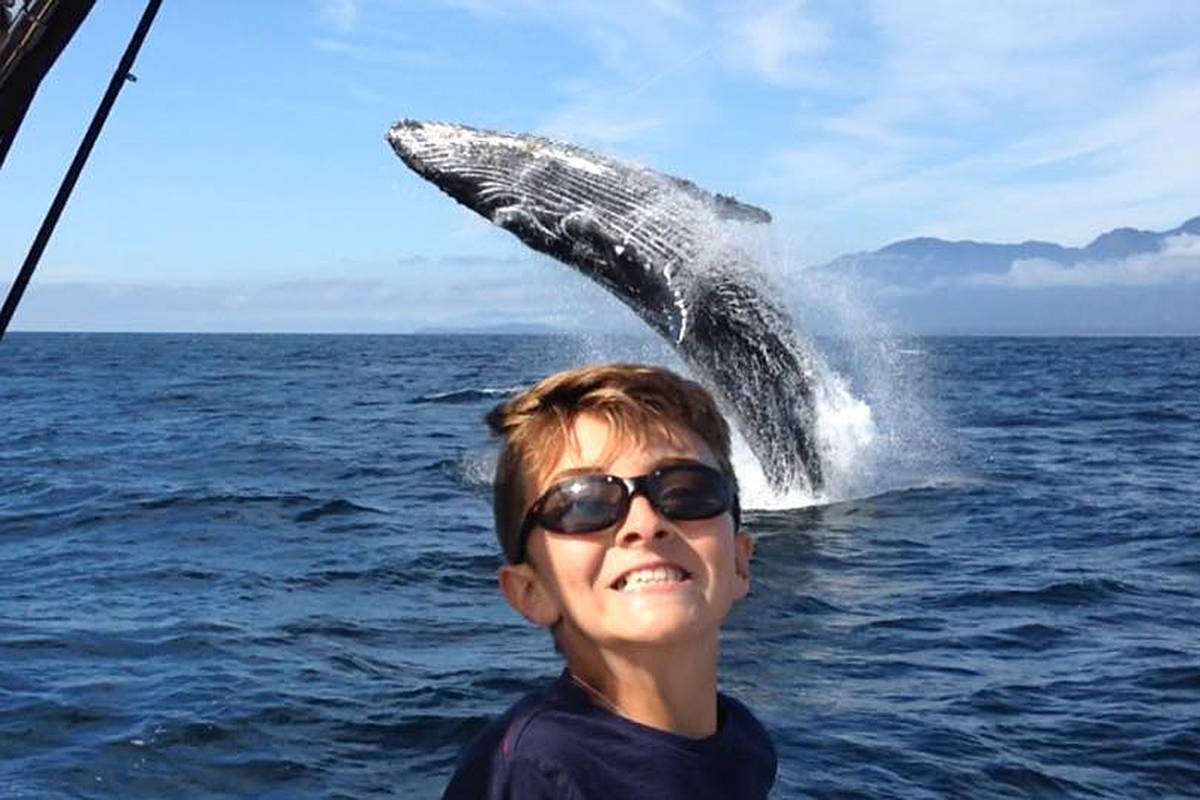The rich social interaction and highly evolved brains of some whales are linked in a kind of evolutionary feedback loop, a newly published paper suggests.
The research, largely done at the University of British Columbia, sheds new light on similarities between whale and human evolution.
“Similar pressures and possibilities in the environment can select for a similar outcome,” said Kieran Fox, now a postdoctoral student at California’s Stanford University and co-author of the new paper in Nature Ecology and Evolution.
Fox and his colleagues studied brain sizes and social behaviours of a wide variety of whale species.
They found that whales with the most complex forms of social interaction — which includes learning from elders, social hierarchies, co-operation and play — tend to live in mid-sized groups of between five and 20. In species such as orcas, individuals have extended one-on-one contact required to develop social behaviour.
“Orcas are in matrilineal family clans,” Fox said. ”These groups stay together, very tight-knit, through their whole lives.”
In addition, Fox found that whales with the largest “social repertoire” also have the largest and most developed brains relative to their bodies.
But which came first, the bigger brain or the richer relationships? Fox said his research suggests the two go hand in hand.
Learning beneficial new skills or social behaviours eventually requires a larger, more powerful brain. And a species that evolves a more powerful brain is better able to learn or develop relationships.
“That’s the theory to this extremely powerful driver of brain evolution — once it gets going, you get some brain tissue that supports (social skills), then these individuals are going to do really, really well, because social co-operation and learning are very powerful survival strategies.”
Fox calls the effect a positive feedback loop.
“Let’s say a random increase in brain size or complexity gives you a greater capacity for social co-operation. If these new social skills pay off, then natural selection will keep favouring expansion of this same brain area. The capacity for social skills and co-operation will expand in turn, and the cycle will repeat.
“What you’ll eventually expect to see is that species that have large, complex brains will also tend to possess a wider repertoire of social behaviours — and this is exactly what we found among the whales and dolphins.”
Humans are the classic example of how the link between powerful brains and rich, adaptive cultures can create a smashing evolutionary success. Fox said his research shows how the same process may be at work in a completely different environment and species.
Whales aren’t the only example of this kind of evolutionary strategy. Some primates and elephants also possess it, said Fox.
“A very different species in a totally different environment, diverging millions and millions of years ago, can nonetheless be selected for this very similar life strategy.”
What’s more, that strategy can be accomplished with very different types of brains. While whales lack the frontal lobes that humans rely on for most of their complex thinking, they have large and well-developed brain regions that don’t really have a human counterpart.
Some scientists still maintain that because whale brains are so different, they can’t be “intelligent.”
“To me, that’s foolish,” Fox said.
“It denies the very possibility that a different brain structure could give rise to similar complexity or social skills. I think the evidence clearly shows that’s possible.”
— Follow Bob Weber on Twitter at @row1960
Bob Weber, The Canadian Press



